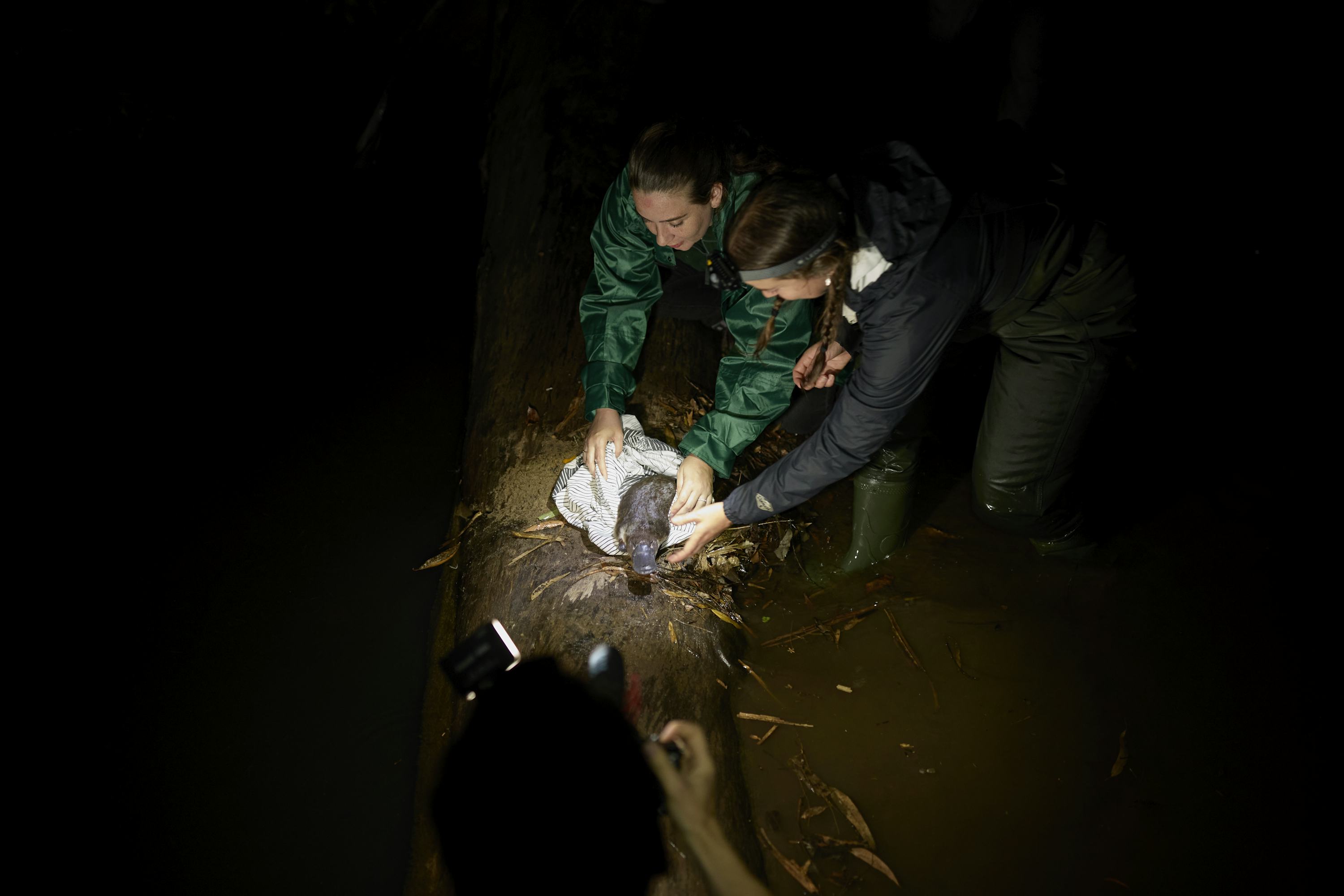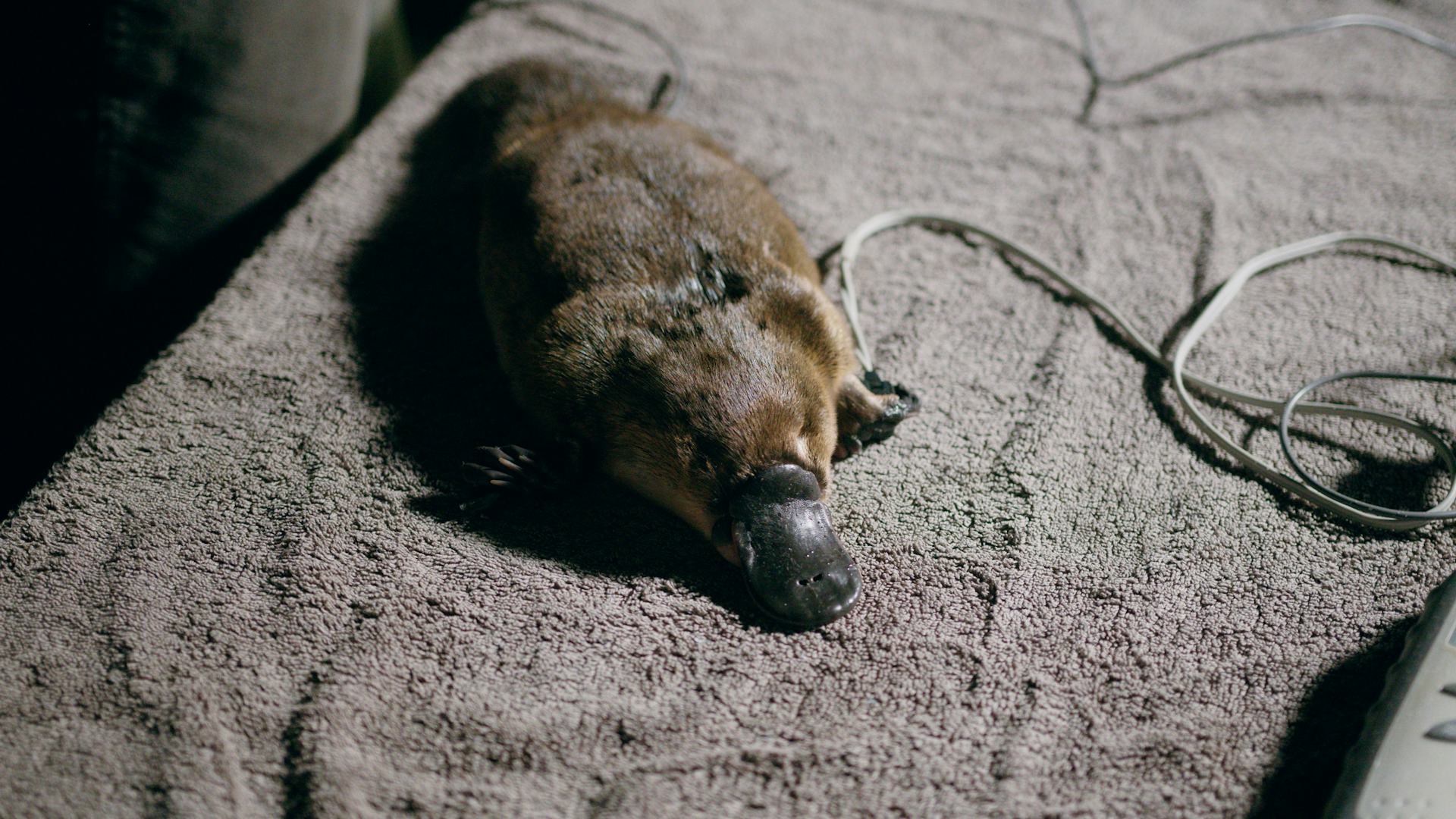The young female platypus was spotted during a survey to assess the wellbeing of the translocated platypus population and confirm potential offspring. Over the course of three nights, experts from UNSW Sydney, Taronga Conservation Society Australia, and WWF Australia, in collaboration with NSW National Parks and Wildlife, strategically placed nets in 'hot spots' along the park's waterways, guided by prior monitoring indicating where regular platypus activity was occurring.

Royal National Park Platypus Translocation featuring Dr Tahneal Hawke (Image: Richard Freeman, UNSW Sydney)
Weighing in at a healthy 850 grams and estimated to be around six months old, the juvenile platypus is in excellent condition. Her age lines up with the end of the platypus breeding season, indicating that she emerged from her burrow recently. She will be named by the local Indigenous community.

Image: NSW government Environment and Heritage
Prior to her release back into the river, the researchers conducted a thorough assessment of her physical condition, collected several samples, and implanted a microchip for future identification. An adult female platypus named Delphi was also captured in the same vicinity during the survey, showing good health. Genetic analysis of the juvenile platypus will confirm her parentage, offering valuable insights into breeding patterns and genetic diversity within the population.
“Finding the juvenile platypus is a clear sign the reintroduced population is not just surviving but thriving, adapting well to their environment, and contributing to the genetic diversity and resilience of this iconic species,” UNSW conservation scientist and project lead Dr Gilad Bino said in a press release.
Continued tracking efforts have confirmed the activity of all 10 originally translocated platypuses, with a few individuals even venturing beyond detection range. Extensive monitoring of the park's waterways has revealed encouraging results, indicating that the habitat, food availability, and water quality are conducive to supporting healthy platypus populations.
The platypuses were gathered from various locations across New South Wales to guarantee genetic variety, then transported to Taronga Zoo's specially constructed platypus sanctuary prior to their release into the park.
The reintroduction of platypuses to the Royal National Park marks the inaugural translocation program for the species in New South Wales. This discovery of a juvenile platypus serves as a beacon of hope, signalling progress in the efforts to restore and preserve Australia's unique wildlife. Plans are underway for further reintroductions in the years to come.
Planet Ark does not take responsibility for the accuracy of the original information and encourages readers to check the references before using this information for their own purposes.